Case Studies for Success in the Factory
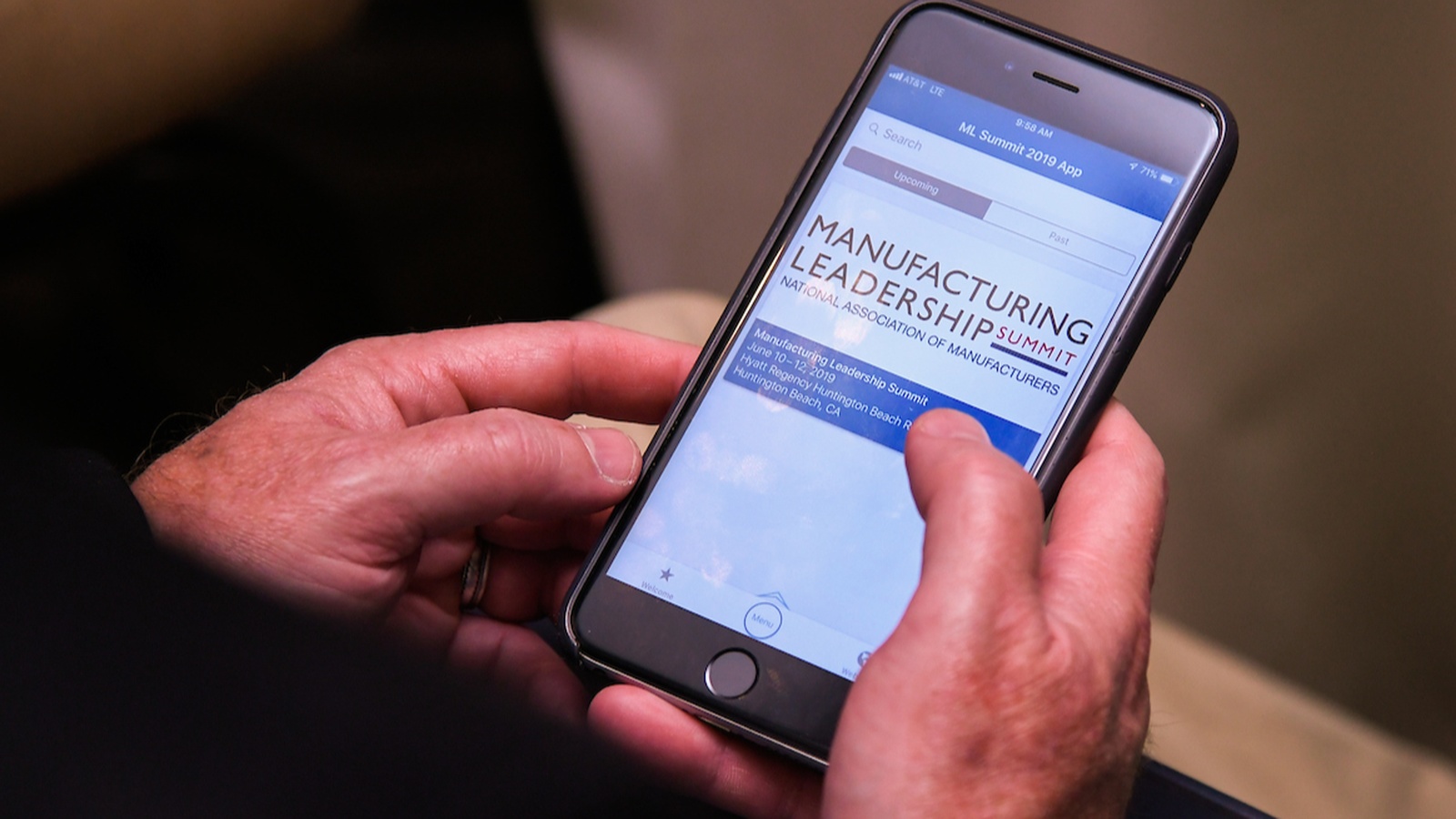
There’s nothing quite like a real-world test run to determine whether a new technology is right for your business. That’s where Rethink, the annual summit of the NAM’s Manufacturing Leadership Council, comes in.
The world’s leading event on Manufacturing 4.0, Rethink boasts an agenda packed with case studies to help manufacturing leaders see exactly how various digital technologies might help them improve their operational quality and efficiency.
The featured case studies coming to Rethink include the following:
- The Expanding Reach of Collaborative Robots: Examine practical applications for collaborative robots in manufacturing. Discover the benefits already being realized from the use of robots and identify ways to maximize the benefits.
- Extracting Insights from Plant Floor Data: See firsthand how to use data to monitor equipment performance, predict conditions and take preemptive action to avoid downtime. Gain practical takeaways on how to leverage data for bottom-line benefits.
- How AR/VR Can Empower Frontline Workers: Take a deep dive into one company’s advanced deployment of augmented and virtual reality technologies. Explore how these technologies helped transform operational activities and empower frontline workers.
- Fostering Data Literacy: The What, Why and How: Learn how to manage and analyze data from all aspects of your operations and use it effectively to improve decision making. Gain an understanding of the emerging discipline of data literacy as a way to overcome business culture hurdles.
How to participate: The Rethink summit takes place June 27–29 in Marco Island, Florida.
- In addition to case studies, the agenda will include inspirational keynote speeches, thought-provoking panel discussions and hands-on think tanks.
- More than 300 top-level executives and their teams attend each year.
- Participants include professionals in operations, IT, supply chain, engineering, C-level management, HR and more.
Click here to browse the agenda and to register.
Manufacturing “Is the Place to Be”: Creators Wanted Wraps Up Freeport Stop
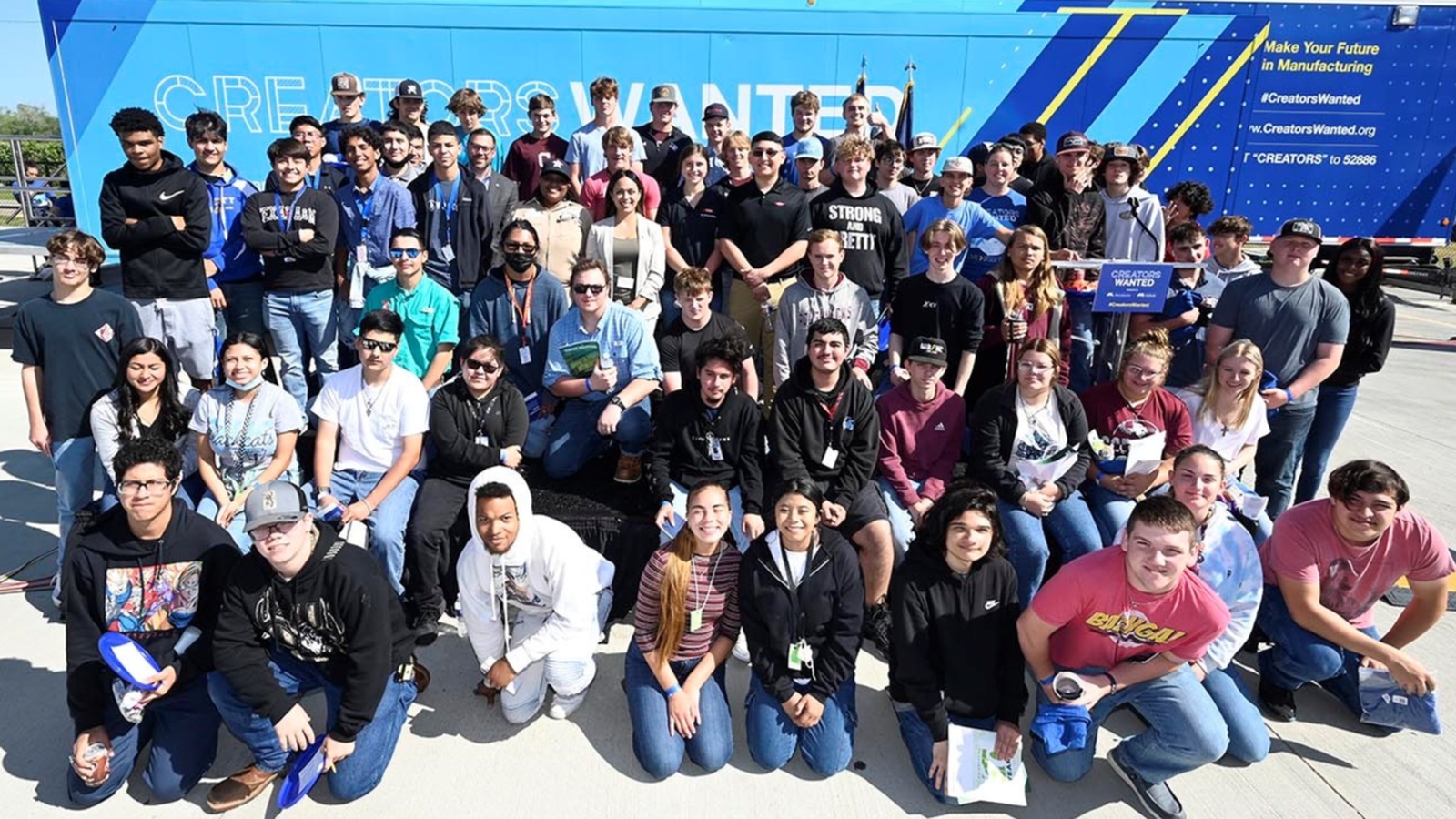
As job recruiters rush back to campuses and career fairs nationwide, the NAM and The Manufacturing Institute’s Creators Wanted Tour Live continued to help manufacturers stand out in the competitive labor market this week in Freeport, Texas.
The reach: The three-day tour stop, presented by Creators Wanted Legacy Sponsor Dow, drew more than 800 students to Brazosport ISD’s new Career and Technical Education Center.
- More than 25,000 students and career mentors signed up online to learn more about modern manufacturing careers.
- Students came from all over the area, including from Brazoswood, Angleton, Brazosport, Columbia and Sweeny High Schools.
Who’s who: Students and teachers got access to top industry leaders, including:
- Dow Senior Vice President of Operations, Manufacturing and Engineering John Sampson;
- Dow Vice President of Operations for the Gulf Coast Fernando Signorini;
- Cornerstone Building Brands Executive Vice President and Chief Human Resources Officer Katy Theroux;
- Dow Plants A&B Manufacturing Director for Texas Operations Sharon Hulgan; and
- BASF Corporation Vice President of Operations, Polyamide & Precursors Deborah McKitten.
These leaders joined creators at their companies, as well as team members at Fluor Corporation, on livestreamed panels throughout the stop to discuss their career journeys and offer advice to students. Here are some of the themes of the event.
Inclusion and diversity: Manufacturing is “for all,” said Dow Associate Research & Development Director Kalyani Martinelango during a Creators Panel on inclusion, diversity and equity.
- She continued: “For Dow to be competitive, we need to be inclusive. And it’s not just about diversity of gender or race … but thought, too. We have to be passionate about inclusion because it’s the right thing to do.”
Change the world, live a good life: Panelists uniformly agreed that manufacturing careers offer significant benefits.
- From making sustainable products to driving innovations to advancing decarbonization to earning great pay, industry careers offer a lot.
- “Manufacturing is an awesome [career] option,” said Hulgan, who oversees two plants in the company’s Texas operations. “They’re in the top 10% of income earners. … This is the place to be if you like to have a nice lifestyle.”
Calling all women: Women shouldn’t hesitate to jump into manufacturing, the panelists advised.
- Manufacturing “is a male-dominated industry, yes,” said Dow Texas Operations Apprentice Leader for the United States Natalia Muniz Rivera. “However, we’re changing that. … Don’t be shy. Get yourself up. This diversity is what makes the future better.”
Meanwhile, the teacher- and student-endorsed immersive experience continued to win accolades.
- One student said, “They made this [in] an actual fun and interactive way so that people can get interested and into manufacturing.”
- Students repeatedly confirmed that the experience changed their perceptions and increased their interest in manufacturing careers.
Activities galore: It wasn’t just Dow that brought the A-team and A-game, complete with a robotic dog and lizard, to excite students.
- Chart Industries and Turner Industries brought team members to answer student questions and help them explore manufacturing in their own backyards.
- Brazosport College helped students chart the next steps in their career processes.
- And FactoryFix was on hand to provide pathways to career coaching and job opportunities.
What young people are saying: In surveys and testimonials, one point came across clearly to prospective manufacturers.
- “It’s definitely a lucrative field to be a part of,” said Dow apprentice Chris Thurman.
- Dow apprentice Anna Green reinforced the point, pointing out that she worked with a good many people who received two-year degrees at Brazosport College and “are making six figures a year.”
The last word: “Creators Wanted shows the variety of opportunities available,” Brazosport ISD Superintendent Dan Massey told The Facts Newspaper (subscription). “There is something to meet the needs of every single student. That’s what’s amazing about this event.”
What’s next? Creators Wanted is working on securing additional financial commitments to finalize a fall tour schedule and reach more students and communities. Email [email protected] if you are interested in supporting the campaign.
“Find Your Future”: Creators Wanted Arrives in Freeport, TX
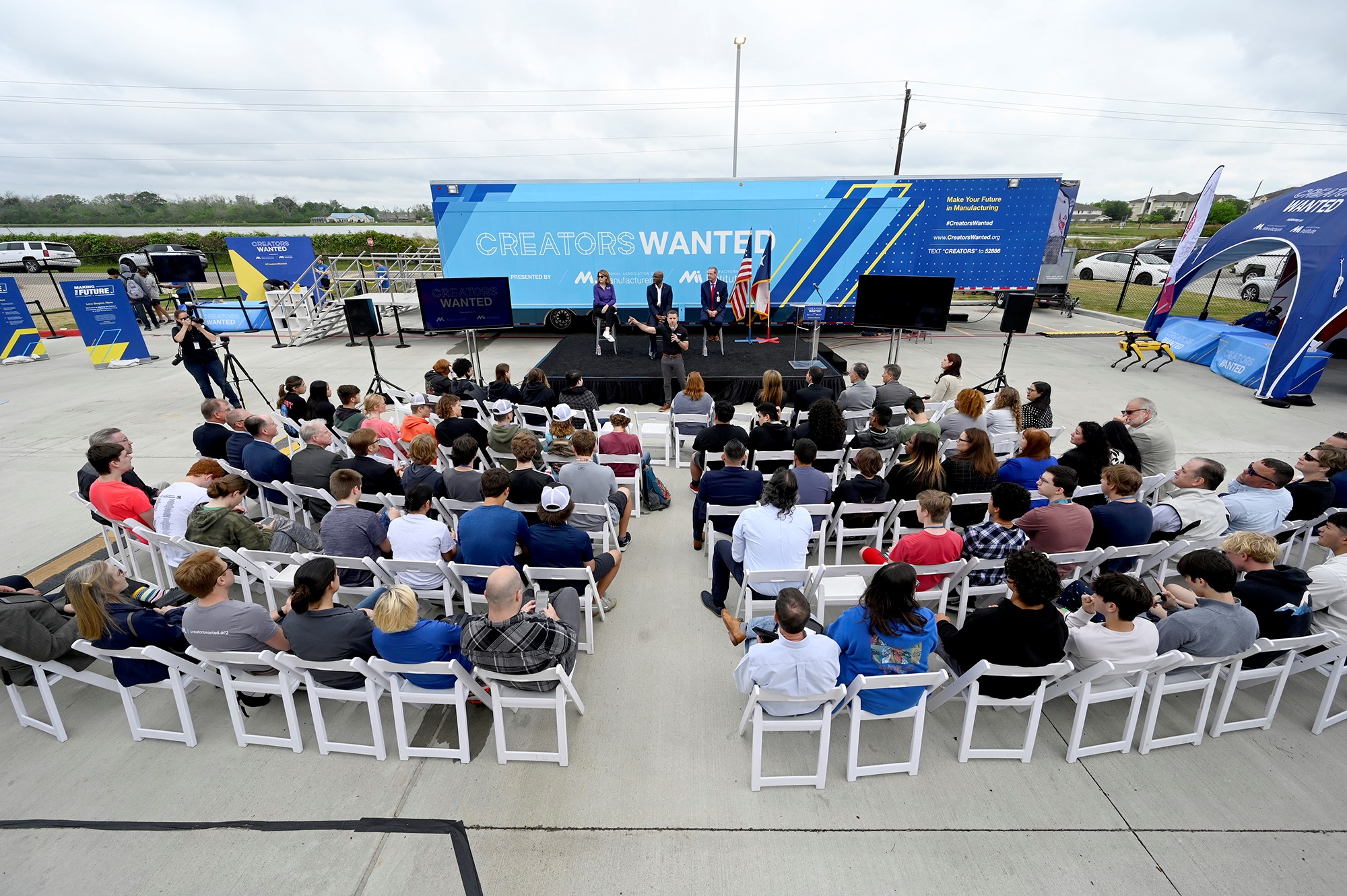
If you want to make a good living, help change the world for the better and have a good time doing it, modern manufacturing has a job for you. That was the message relayed to local high school students this Tuesday at the premier event of the Creators Wanted Tour Live’s seventh stop, in the Freeport, Texas, area.
Inspiring students: The CW tour, a joint project of the NAM and its workforce development and education partner, The Manufacturing Institute, aims to inspire, educate and empower tomorrow’s workforce.
- For this week’s tour stop, presented by Dow, the immersive mobile experience came to Brazosport Independent School District’s Career and Technical Education Center in Clute, Texas.
- The CTE Center, which is located near Dow’s largest manufacturing facility in the world, strives to prepare students for careers in a global economy by emphasizing career and technical education.
- “We believe that the future of our workforce is highly dependent on the quality of public education,” said Brazosport Independent School District Superintendent Danny Massey.
Seeking difference makers: Dow Senior Vice President of Operations, Manufacturing and Engineering John Sampson highlighted the numerous opportunities available in modern manufacturing to do interesting, well-paid, life-changing work.
- “I hope some of you—all of you—will be creators,” Sampson told students at the kickoff event. “At this point in your lives, you’re probably thinking about what you might want to major in. … I’m sure some of you might be interested in making some money, [too,] but you probably want to do more than that.”
- “You probably want to make the world a better place, create something people want [and] have some fun. … I promise you this: We’ll always have a place for you on our team.”
Filling a void: Before the students rushed off to complete their “race to the future” in the mobile experience, MI President Carolyn Lee laid it out for them: Creators aren’t just wanted—they’re sorely needed to keep the world running and advancing.
- “Without a steady stream of talented, bright young people … we can’t keep up the good work of continuously making our products,” Lee said. “[But] this is not a get-one-job-and-stay-there-for-40-years [situation]. This is a choose-your-own-adventure [career path] with continuing skills and challenges and opportunities and learning along the way.”
- There are currently more than 850,000 open manufacturing jobs, Lee said, and by the end of this decade, modern manufacturing will require an additional 4 million workers.
Find your future: “We’re here because we know there’s something for everybody in manufacturing,” Sampson told event attendees in his closing remarks. “We hope you will find your future in modern manufacturing.”
- Dow Vice President of Operations for the Gulf Coast Fernando Signorini echoed his colleague’s sentiment at a Creators Spotlight panel later on Tuesday. “If your desire is to go and get an education in engineering, you’re going to have a lot of opportunities,” he said.
- “If your desire is to have a technical degree, [you’re] going to have a lot of opportunities. For a company like Dow to work, we need all the different … diversities in education and degrees. You see everything in there.”
The impact: More than 750 students are expected to tour the mobile experience this week at the CTE Center, and more than 25,000 students and career mentors in the Houston-metro area have already signed up online to learn more about modern manufacturing careers as a result of this latest tour stop.
Take a look: Check out this highlight reel from the second day of the tour stop.
Chip Industry Pushes for Innovations, Facing Booms and Bottlenecks
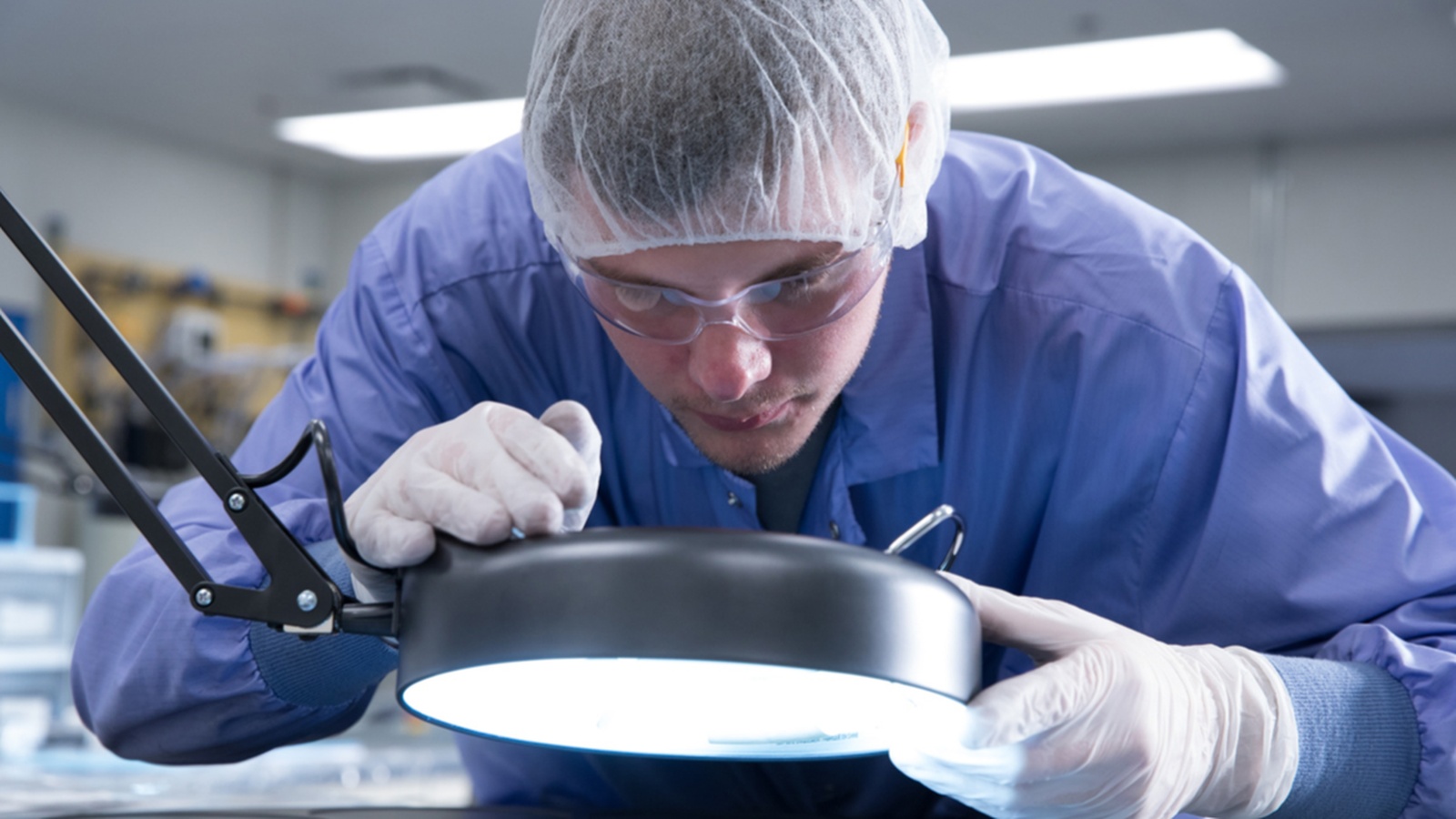
As supply chain bottlenecks and materials shortages continue to challenge both the U.S. and the world, companies in the semiconductor industry are working hard to meet high-quality standards, achieve strong technological innovations and keep up with the growing demand.
To meet these goals, chip producers as well as all their suppliers are continuously investing time and funds into new products, technologies and facilities.
SGL Carbon, a global manufacturer of products derived from carbon and graphite, is part of this supply chain for chip producers.
Heavily invested: The company, which has its North American headquarters in Charlotte, North Carolina, has been investing significantly in its semiconductor-related production while working hard to meet demand and keep pace with the ever-shifting market.
- Over the past four years, SGL Carbon invested approximately €30 million into enhancing its production capacities and a modern clean-room environment in St. Marys, Pennsylvania, the home of its main North American operations related to the semiconductor industry.
Smaller size, bigger impact: The semiconductor market is a dynamic sector, and its applications are now more essential than ever to everyday life, according to SGL Carbon Vice President of Marketing and Sales Doug Garda. As chips get smaller, their efficiency and performance are getting bigger—and so is the global appetite for them.
- “We’re seeing more and more demand globally, and the infrastructure that exists in the industry isn’t sufficient to meet those demands,” Garda said. “Especially with the Internet of Things, e-mobility, LED lighting and automated production, there are so many more applications and high-performance variants of chips required for the future. We need to meet that very steep demand curve.”
Global shortages: While in development, semiconductor chips can cross international borders 70 times before the end product reaches a consumer, fueling significant complexity in the manufacturing process and supply chains.
- With the onset of the COVID-19 pandemic, labor challenges, shifts in consumer needs and general unpredictability have fed worldwide supply issues.
High demand: In the midst of these shortages, the market for silicon-based wafers, used for regular chips, is expected to grow by 5% annually over the next five years. However, the market for special silicon-carbide-based wafers, used for high-performance chips, is expected to grow by 30% or more annually over the same period.
A critical market: Sometimes described as the “brains” of electronic devices, from automobiles to home appliances to personal electronics and medical devices, semiconductors are critical components for all sorts of manufactured products. A shortage in semiconductors creates ripples all across the manufacturing industry.
- “The semiconductor market is a key component to any region’s manufacturing needs right now,” said SGL Carbon NA Network Operations Manager Tom Detsch. “It’s one of the most important opportunities of our time—and we’re of course also looking for funding options to further grow.”
Eye on Congress: The U.S. House of Representatives and Senate have both considered legislation designed to strengthen the U.S. semiconductor industry, but differing bills have left Congress with varying approaches.
- The House passed a bipartisan CHIPS Act in the National Defense Authorization Act authorization last year, but it lacked funding. The funds were instead included in subsequent legislation, the America COMPETES Act.
- Meanwhile, the Senate passed its CHIPS Act funding through the United States Innovation and Competition Act of 2021 (USICA).
“The question remains: what’s next?” said Detsch. “These markets are growing. How much is going to be in the United States, and how much will be outside? There’s government funding being looked at here in the U.S. and abroad. That’s something that would be interesting for us in the U.S. if something like that were to be available.”
Our take: The NAM is strongly supporting efforts to increase domestic chipmaking capacity here in the United States and is urging the federal government to help make that goal a reality.
The last word: “We’re a solutions provider, and demand for our graphite products has expanded rapidly,” said Garda. “Without graphite-based equipment, no semiconductors could be manufactured. Thus, this will be a growing market for us and for North America in general for a long time.”
An ExxonMobil Engineer Makes a Difference
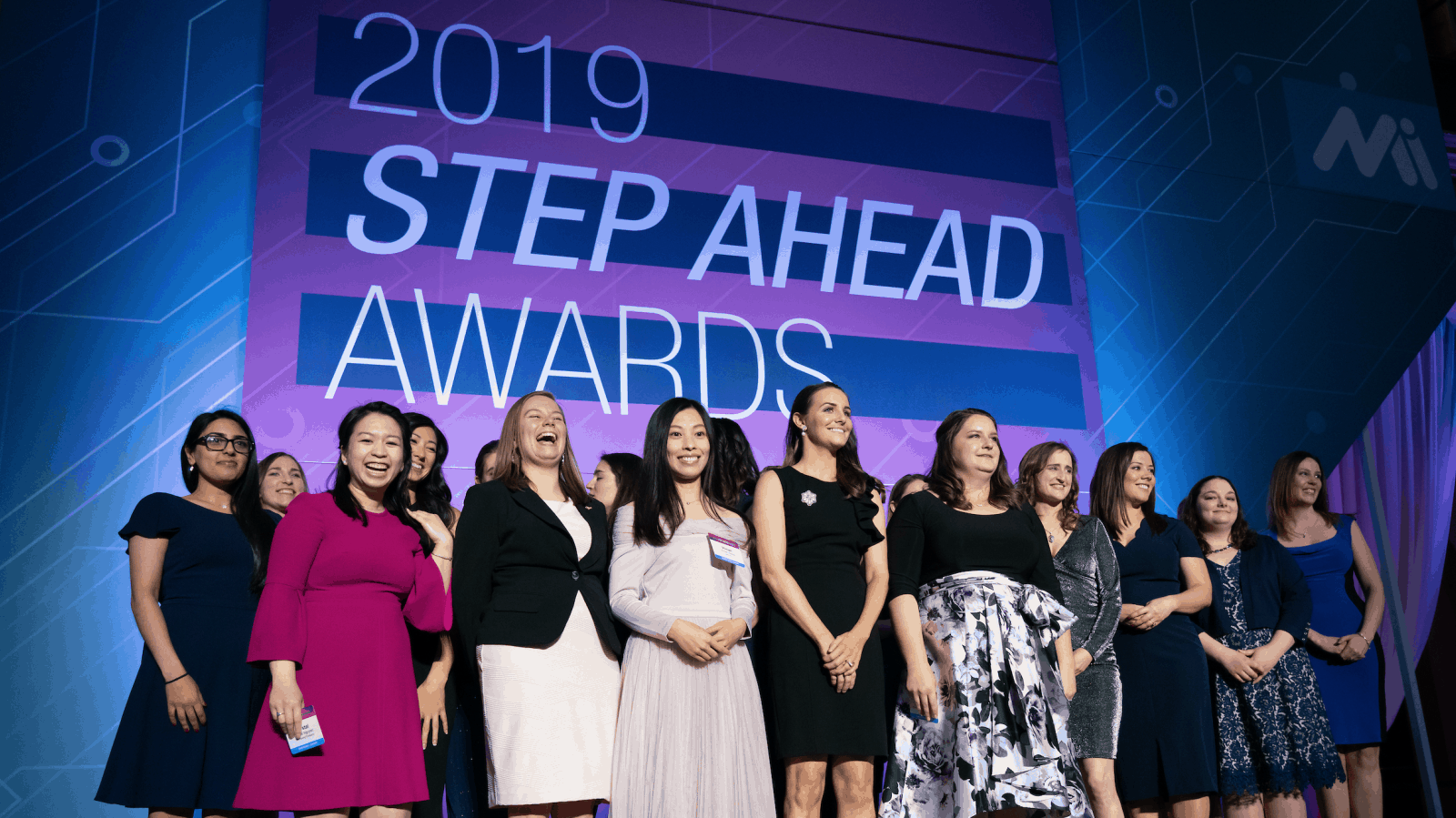
Erika Anderson didn’t always know she wanted to be an engineer. In fact, for most of her childhood, it wasn’t a career path she had even heard about.
- “I didn’t know what engineering was until my senior year in high school,” said Anderson. “I thought an engineer was a train driver, and nobody told me differently.”
A moment of truth: During her senior year, Anderson was told to research the major she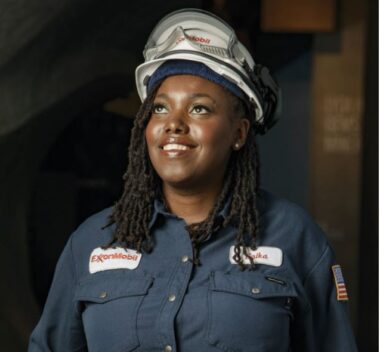 wanted to explore after high school. She searched online, looking for careers for people who liked math and science—and the first thing that came up was engineering.
wanted to explore after high school. She searched online, looking for careers for people who liked math and science—and the first thing that came up was engineering.
- “It was all about people who like a challenge; people who are lifelong learners,” said Anderson. “And as I kept reading, I kept hearing myself in this description. People had always said, you’re smart, you should be a doctor or a lawyer. But nobody ever said engineer.”
Her journey: At Spelman College and the Georgia Institute of Technology, Anderson studied mathematics and mechanical engineering, respectively, while working for GE Aviation and NASA. But it was during a semester spent working at ExxonMobil that she found her passion.
- “ExxonMobil was challenging, and I absolutely loved it,” said Anderson. “I loved the boots, the hard hats, getting my hands dirty. I was able to go out into the field, see all the equipment. I was in awe. I fell in love with it.”
Her job: On her last day in the office during her program at ExxonMobil, the company offered Anderson a full-time job. Today, she’s in her eighth year, working as both the reliability engineer and the reliability coordinator in Baytown, Texas. For ExxonMobil, those are critical roles, tasked with ensuring that the company’s equipment keeps functioning as designed. The way Anderson explains it:
- “Your car comes with a manual and it tells you when you’re supposed to change your oil or rotate your tires. And someone has to figure out how long that oil or those tires can run. I’m not dealing with cars, but I’m dealing with heat exchangers, compressors and pumps. I ensure that this equipment works, that it works reliably, and that we’re making repairs at an interval that keeps your equipment working as it should.”
Making a difference: As a Black woman in manufacturing, Anderson is used to being different from the people around her. She has found herself confronting stereotypes and preconceived notions about who she is. It hasn’t always been easy, but she’s doing vital work—and ensuring that other young women have the opportunity to follow their passions.
An example to others: Anderson was recently recognized by The Manufacturing Institute, the workforce development and education partner of the NAM, as a 2021 STEP Award Emerging Leader. The award is presented to women leaders in science, technology, engineering and production careers who exemplify leadership within their companies and in manufacturing in general.
- She’s also been featured in a book called Everyday Superheroes: Women in Energy about women in different fields in the energy industry; a TV show on CBS highlighting women in STEM; and a project by The Smithsonian and IF/THEN to put up 120 3D-printed statues of women trailblazers in Washington, D.C.
Advice for others: Anderson is an advocate for other women who are considering a career in manufacturing. She encourages women to find mentors, build a network and, above all, be confident.
- “Self-doubt is real, and sometimes, we can be our own biggest critics,” said Anderson. “We have to understand that we are excellent. We are great. And at the end of the day, for any woman coming to this industry—if you’re even thinking about it—there’s something in you. If it were easy, everyone would be doing it.”
The last word: “My grandmother always told me: you’ve got to get comfortable with being uncomfortable. The only way things will change is by having more people like me in the room. We are just as capable as anyone else, and whatever preconceived notions that may exist, I am here to kick those doors down.”
How a 5G Smart Factory Doubled Ericsson’s Output

How will the 5G transition affect manufacturing? If you ask Ericsson Senior Vice President Åsa Tamsons, enormously.
5G will help drive global transformation, innovation and sustainability in our sector, Tamsons recently told the NAM’s Manufacturing Leadership Council. She sat down with MLC Co-Founding Executive Editor and Senior Content Director Paul Tate at Ericsson’s new 5G Smart Factory in Lewisville, Texas, to tell us more.
About Ericsson: Founded in 1876, Ericsson Inc. is a leading provider of information and communication technology. The company is now a $25 billion global enterprise with 100,000 employees serving clients in 180 countries.
About the Lewisville plant: Ericsson describes its Lewisville plant, which opened in March 2020, as a “5G-enabled, digital native” facility.
- “We wanted to be able to obtain data from every single source, device, machine and person operating in the facility, both now and in the future,” she said. “One part was implementing 5G, but we also needed a data architecture to secure that and to use equipment that is able to extract both production data and operational status.”
Development process: In its journey to Manufacturing 4.0, Ericsson used a particularly agile development process.
- “We had a mission to develop 25 use cases within a year,” Tamsons said. “In the first eight months, we launched seven of those 25 use cases. In the remaining four to five months, we launched the other 18. It just shows the power of doing that groundwork, while also demonstrating that you can launch end-to-end solutions in rapid time. Then you really start to have platforms that you can scale.”
Measuring impact: The Lewisville facility serves one of Ericsson’s biggest and most important markets in the world—yet it is operated by just 100 people.
- The plant delivers 2.2 times more output than similar sites that don’t have the same degree of automation or technology in place.
Lighthouse status: Lewisville is also one of the world’s first manufacturing plants to achieve Global Lighthouse Network status under the World Economic Forum’s new sustainability category.
- A combination of recyclable and reused materials, renewable energy, an ideal location close to a major airport and advanced manufacturing technologies supported this award.
- “Innovation is not all about technology,” Tamsons said. “It’s about how you apply it and how you can use the best of technology to create better solutions that are also more sustainable.”
What’s next: The Lewisville plant has plans for further innovation.
- “We’ll continue to build out the data structure and cloud capability, really focusing on how we can scale up the value of existing use cases and applications and on what the next use cases will be,” she said. “We’re continuing to invest in upgrading our manufacturing sites to develop a reliable, sustainable, global supply chain, not only in Lewisville, but across the world.”
Attend a plant tour: Join the MLC in Texas for the Ericsson Lewisville Plant Tour on Oct. 4–5 to see Ericsson’s 5G-enabled digital native, double Lighthouse award-winning plant for yourself. Save the date and watch for more details.
Manufacturers Lead with Their Hearts in Ukraine Aid

Manufacturers have been eager to help those affected by the humanitarian crisis in Ukraine, with many even lending a hand on the ground.
What manufacturers have been doing: They’ve raised millions of dollars through their own charities and funding vehicles, donated parts of their own profits, provided free legal support and phone calls to Ukraine, given medications and food, coordinated the shipping of relief supplies and more.
- Some manufacturers with operations in Ukraine have helped employees and their families flee the country and find temporary homes elsewhere in Europe.
Shared values: “Manufacturers have a proud history of standing firm in support of democracy, and we stand with the Ukrainian people,” NAM President and CEO Jay Timmons said recently, following the unanimous vote by the NAM Board of Directors to denounce Russia’s invasion of Ukraine.
Partnering to help: To help the people of Ukraine, the NAM’s Emergency Response Committee has partnered with Project HOPE and is engaging with other members who are donating through this and other channels.
- These efforts are providing channels for manufacturers to support efforts on the ground. For example, advanced materials manufacturer Greene Tweed recently donated $25,000 through the NAM–Project HOPE partnership.
- Project HOPE, an international health care and disaster relief organization, has emergency response teams in both Ukraine and neighboring countries that are giving health and humanitarian assistance to refugees and internally displaced persons.
- The ERC is a volunteer-led group that works to provide resources and information to manufacturing leaders before, during and after crises, both domestic and international. In addition to its partnership with Project HOPE, the ERC is also working with domestic partner Good360 on Ukraine relief.
The NAM says: “Manufacturers are truly at the forefront of aid efforts to Ukraine,” said NAM Senior Director of International Trade and Regulatory Affairs Ryan Ong. “Collectively, they’ve raised tens of millions of dollars for food, shelter, medicine, health care and more for the people of Ukraine. They’ve stepped up to help those in need, just as they do as a group in any time of crisis or hardship.”
Those wishing to donate to Project HOPE can do so here. To get more information about NAM efforts or share what your company is doing, contact the ERC at [email protected].
Manufacturers: Climate Disclosures Must Be Tailored and Targeted
Washington, D.C. – Following the release of a proposed rule by the U.S. Securities and Exchange Commission on climate disclosures, National Association of Manufacturers President and CEO Jay Timmons released the following statement:
“Manufacturers support key disclosures related to publicly traded companies’ climate strategies, as this information can help shareholders make informed decisions. However, broad, sweeping disclosures could be counterproductive—requiring manufacturers to waste time and resources reporting irrelevant information that will not be decision-useful for shareholders. The SEC should focus on requiring disclosure of material information, and the NAM looks forward to working with the SEC to ensure that its proposed climate reporting rule enables smart, company-specific disclosures that are tailored and targeted.
“Manufacturers are proudly leading on climate solutions. After all, it is manufacturers that make the products and technologies needed to face this generational challenge—clean energy, carbon capture, batteries, microgrids, advanced vehicles and more. And through our policy proposal, “The Promise Ahead,” the NAM has offered lawmakers a guide for achieving climate solutions alongside economic growth. Especially at this time of global turbulence and supply chain disruptions, our actions must allow for an all-of-the-above approach to safeguarding America’s energy security.”
-NAM-
The National Association of Manufacturers is the largest manufacturing association in the United States, representing small and large manufacturers in every industrial sector and in all 50 states. Manufacturing employs more than 12.5 million men and women, contributes $2.57 trillion to the U.S. economy annually and has the largest economic multiplier of any major sector and accounts for 58% of private-sector research and development. The NAM is the powerful voice of the manufacturing community and the leading advocate for a policy agenda that helps manufacturers compete in the global economy and create jobs across the United States. For more information about the NAM or to follow us on Twitter and Facebook, please visit www.nam.org.
State of Manufacturing: Resilient
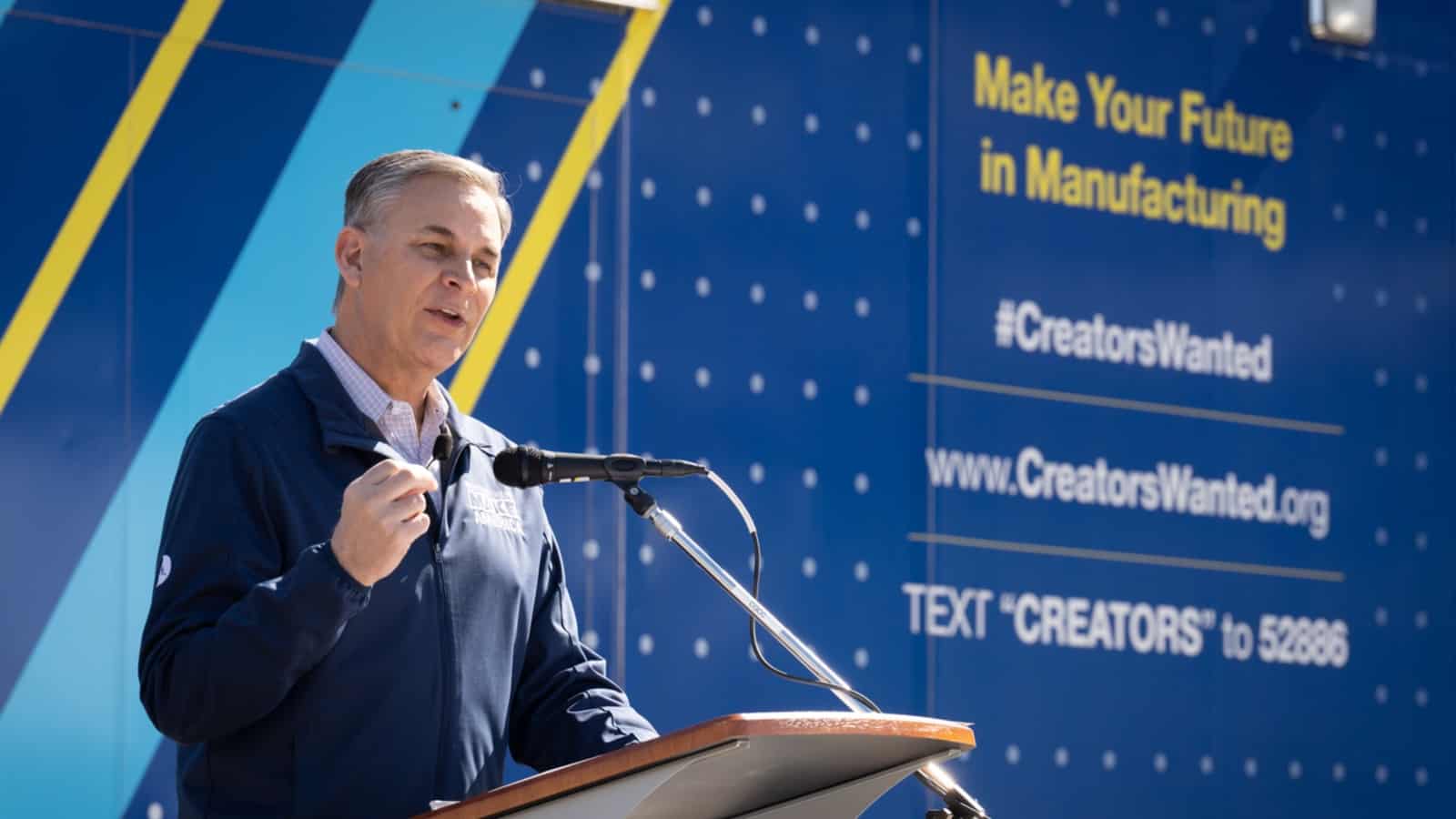
Workforce inspiration, COVID-19 safety, sound legislative policy, tax reform and democracy—these were the main themes NAM President and CEO Jay Timmons discussed during the NAM’s State of Manufacturing address Thursday at Chandler-Gilbert Community College Williams Campus in Mesa, Arizona.
Inspiring the workforce of tomorrow: Manufacturing is a high-tech, fast-paced, well-paying place to work, Timmons told the audience as he stood before the Creators Wanted Tour Live mobile experience, an initiative of the NAM and its workforce development and education partner, The Manufacturing Institute. But, he said, the industry has not been immune to the labor shortage.
- “For each of the past nine months, manufacturers in America have had more than 800,000 open jobs in our industry—800,000 chances to launch a well-paying career,” Timmons told the audience of college students, teachers and staff, as well as local manufacturers. “In Arizona, there were more than 11,000 openings in just the first 45 days of 2022.”
- Yet the state of U.S. manufacturing is, Timmons announced, resilient. “There’s hardly ever been more opportunities for future manufacturing workers. Innovators. Designers. Technicians. Creators. We’re a $2.57 trillion industry, with more than 12.5 million workers and counting. And the vast majority of manufacturing leaders say they are optimistic about the future.”
Getting policy right: Timmons also talked about the policy landscape and stressed the need for lawmakers to enact robust supply-chain, immigration-reform and competitiveness measures.
- “If we’re really going to outcompete China and other countries, then we need Congress to finish up the ‘global competitiveness bill’ they’re working on and get it to the president,” Timmons said.
- He added that coming legislation must include measures to bolster supply-chain resilience, combat goods counterfeiting and increase domestic semiconductor manufacturing.
“Rocket fuel” required: Following the passage of tax reform in 2017—which Timmons called “rocket fuel for our economy”—manufacturers have “kept our promises to raise wages, hire more workers and invest in our communities,” he said.
- “For more than a year, some politicians have tried to raise taxes on manufacturers,” Timmons said. “They tried it with the COVID-19 relief bill. They tried it with infrastructure. They tried it with Build Back Better. And three times, manufacturers said don’t do it. And we won. The voices of moderation in the Senate prevailed.”
- “But if tax reform is repealed or punitive measures, such as the ‘book tax,’ are passed, the U.S. economy will suffer,” Timmons said.
Safeguarding values: America’s values and institutions are what have made manufacturing possible, Timmons said, and we must defend them from the threats they now face.
- “Today, America faces new threats to our democracy, including those threats from within,” Timmons said. “And once again, manufacturers stand proudly on the side of protecting and preserving American democracy and our constitutional republic.”
Media mentions: News of Timmons’ address was picked up by national outlets including POLITICO Pro’s Morning Trade and Fox Business, and an op-ed by Timmons ran on Cleveland.com.
Point of emphasis: “I’ve always believed, and the past two years have reinforced, that manufacturers are in the business of causes greater than self. From building the arsenal to win a world war decades ago, to pioneering the treatments to defeat today’s diseases and pandemics, we change the world,” Timmons underscored in the wrap-up of the address.
Read Timmons’ full remarks here. Learn more about the Creators Wanted campaign and encourage students in your networks to RSVP for its Scottsdale, Arizona, showcase on March 7 here.
New Indo-Pacific Framework Should Prioritize U.S. Manufacturers
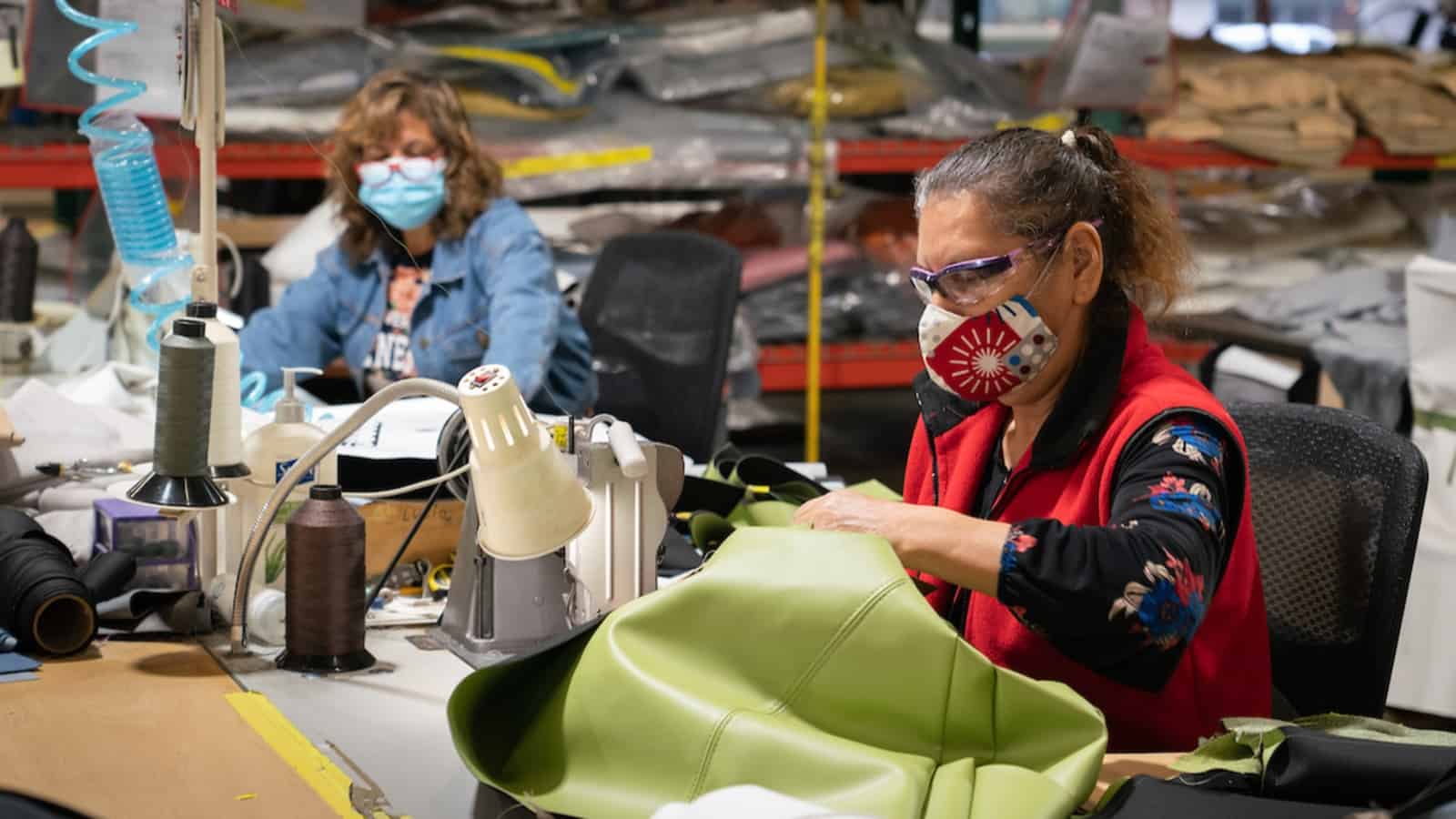
The NAM is calling for a U.S. economic approach in the Indo-Pacific region that incorporates several key trade elements for manufacturers.
The background: Earlier this month, the White House unveiled a 12-page strategy overview focusing “on every corner of the region from South Asia to the Pacific Islands to strengthen its long-term position and commitment,” according to Reuters (subscription).
- In the document, the U.S. promises to strengthen partnerships, modernize alliances and invest in regional organizations.
- According to an action plan for the next one to two years, the U.S. will “‘meaningfully expand’ its diplomatic presence in Southeast Asia and the Pacific Islands.”
The NAM’s view: “As the administration continues to develop the framework, it must prioritize an approach that supports manufacturing and manufacturing jobs by opening markets, strengthening U.S. innovation and technology leadership, raising global standards to U.S. levels and putting in place best-in-class trade rules,” said NAM President and CEO Jay Timmons in a letter sent on Tuesday to Secretary of State Antony Blinken, Secretary of Commerce Gina Raimondo, U.S. Trade Representative Katherine Tai and National Security Adviser Jake Sullivan.
Key inclusions: The NAM is urging the administration to include several major elements in its new framework. These include but are not limited to:
- Prioritizing efforts to eliminate trade barriers in the region that hamper U.S. competitiveness;
- Instituting strong intellectual property rules that set high standards for IP protection and strengthen innovation;
- Securing regional or bilateral digital trade commitments; and
- Strengthening collaboration on standards, regulatory and conformity assessment with countries in the Indo-Pacific region.
The last word: “This approach is necessary so that manufacturers in the United States do not fall behind our competitors in the Indo-Pacific, such as China, that are actively negotiating and implementing new trade agreements to lock in opportunities for their manufacturers, not ours,” said Timmons.